| Botanical Name |
|
| Family |
Lamiaceae - The mint and salvia family |
| Pronunciation |
tet-ra-DEE-nee-uh rip-ar-ee-uh |
| Common Name(s) |
English: Wild Ginger; Ginger Bush
Afrikaans: Gemmerbos; Watersalie
|
| Plant Group |
- Shrub A woody plant of relatively low height, having several stems arising from the base and lacking a single trunk; a bush.
|
| Plant Size |
- Medium to Large
| Tree | 15m to 20m |
| Shrub | 2m to 3m |
| Perennial/ground cover | 60cm to 75cm |
| Bulb | 60cm to 1m |
| Succulent | 60cm to 1m |
|
| Position |
- Light or Dappled Shade Found below trees with sparse, open foliage. Ideal for the protection of herbaceous plants.
- Partial Shade The area is in shade for part of the day and in full sun for part of the day.
- Sun The area is in full sun for all or most of the day, all year round.
|
| General Information |
- Deciduous Plants which completely lose their foliage for part of the year.
- Drought Tolerance: Moderate The plant is moderately adapted to arid conditions and can survive short periods of drought and high temperatures without extra water.
- Frost: Half-hardy The plant is able to survive low temperatures and some frost but requires protection against severe frost.
- Prune hard after flowering Fast growing shrubs that grow lanky within a season. Cut off branches and stems of these plants to a third of their original length. This will increase the yield of flowers, improve the plants shape and enhance the structural strength of main branches.
- Water Moderate These plants will need some extra watering compared to water-wise plants. Plant them together, in at least some shade and in a convenient proximity to the house so that grey water can be utilised during times of drought.
|
| Specific Information |
Tetradenia riparia is a useful plant in that it flowers in winter when there is little colour in the garden. The stems are slightly succulent and the aromatic leaves are heart shaped and bright green in colour, making a pleasing background plant during spring and summer. The leaves turn yellow and fall in autumn, prior to flowering. The Ginger Bush is fast growing and will flower in its first year. The flowers of the male plant are more compact than those of the female plant.
|
| Ad Break |
|
| Flowers |
| Description |
small flowers on spikes creating a misty effect
|
| Season |
- Winter Plants will seldom bloom for the entire season as given in the list, but should flower during a period within these parameters.
|
| Colour |
|
| Growth Rate |
- Fast Specifying growth rate can be very misleading as there is considerable variation of growth rate depending on type and species of plant, available water, supplementary feeding, mulching and general care, as well as the plants suitability and adaptability to the garden environment.
|
| Plant Uses |
- Attracts bees, butterflies or other insects This plant attracts insects which can be food for birds or other creatures in your garden.
- Border A strip of ground, at the edge of a driveway or path in which ornamental plants or shrubs are planted.
- Boundary A plant useful for planting around the edges of the property to form a green or colourful backdrop, an impenetrable hedge, to hide walls or create privacy.
- Container Trees, shrubs and ornamental species that can adapt to growing in a restricted environment.
- Filler Either a fast growing tree or shrub used temporarily to fill in an area while the permanent plants grow to a desired size, or a plant used to fill gaps in borders or beds.
- Suitable for coastal gardens Plants adapted to dry, sandy soil, forceful wind, limited rainfall and intense sunlight.
- Wild Garden An indigenous garden planted for the benefit of wildlife and birds. Provides food, water, a variety of mini-biomes and no poisonous chemicals are used.
|
| Distribution and Habitat |
KwaZulu-Natal, Northern Province and Mpumalanga in South Africa, as well as Swaziland, Namibia, and Angola, then northwards through tropical east Africa into Ethiopia, along river banks, on forest margins, in dry valleys and on hillsides, where there is little frost
|
| Planting Suggestions |
Plant in light, well drained and well composted soil. Mulch well. Tetradenia needs water in summer but not as much in winter. Plant in full sun, except in very hot areas where some shade will be beneficial. Pruning can be done after flowering. I pinch back the growing shoots in spring and summer to encourage branching.
|
| Medicinal Uses |
The plant is used for the relief of chest complaints, stomach ache and malaria. Inhaling the scent of the crushed leaves is said to relieve headaches.
|
| Ad Break |
|


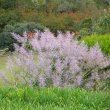
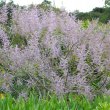
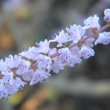

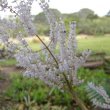
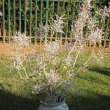
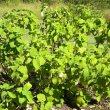


Comments
tetradenia is also usedf in
tetradenia is also usedf in the treatment of ECF in harbivores
Discuss this plant
Share knowledge, ask a question or give an experience.